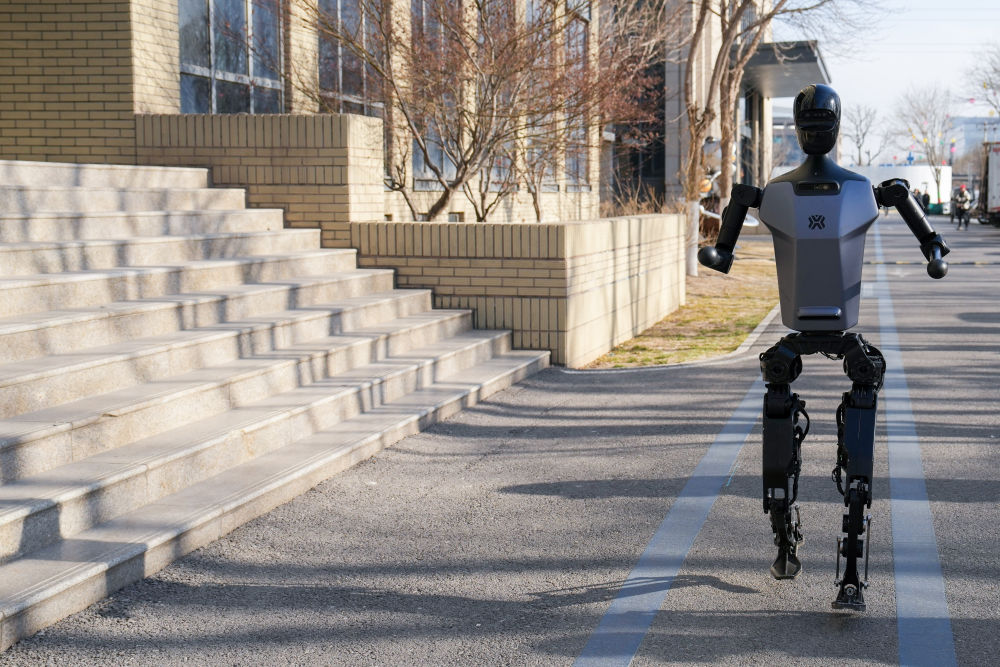When Machines Lace Up: Beijing’s Human-Robot Half-Marathon Marks a Bold New Chapter in Innovation
- Ingrid Jones
- China
- D.O.C Supplements - Trending News
- Technology
- April 13, 2025

In what could be mistaken for a page torn from the future, Beijing is about to make science fiction walk—and run—into real life. Today, the streets of Beijing E-Town will host the world’s first-ever human-robot co-run half-marathon. Not a gimmick, not a lab demo—this is a full-fledged endurance test where humanoid robots will join over 30,000 human runners to cover the same 21.0975-kilometer course, step for calibrated step.
The event, officially dubbed the 2025 Beijing E-Town Half-Marathon and Humanoid Robot Half-Marathon, blends athleticism with artificial intelligence in a way the world has never seen. It isn’t just another novelty to grab headlines; it’s a stress test for the robotics industry and a proving ground for machines designed to coexist—and one day perhaps co-compete—with humans.
The humanoid contender grabbing early attention is “Tiangong,” a robot that debuted last November and now returns to face real-world challenges under the eyes of engineers, runners, and curious onlookers. But Tiangong won’t be alone. Research labs, robotics startups, universities, and global tech powerhouses have swarmed to the opportunity, sending their mechanical athletes to line up at the starting line. And while these robots will race in a designated lane, shielded by safety barriers, their presence on the same course signals something far more significant than a photo op.
For humans, the half-marathon is a gut-check of endurance and resilience. For humanoid robots, it’s an unforgiving test of hardware durability, software coordination, and adaptive intelligence. In other words, this race is less about crossing the finish line and more about what breaks down along the way—and what breakthroughs arise from it.
“We’re treating this as an industrial stress test, not just a sporting event,” said Xiong Youjun, CEO of the Beijing Humanoid Robot Innovation Center. “If a robot can handle a half-marathon, it’s not just athletic—it’s viable.”
Indeed, running, with its rhythmic pounding and split-second adjustments, poses a nightmare scenario for robotics engineers. The robots must handle full-body coordination, dynamic obstacle avoidance, terrain variation, and continuous impact—all while managing heat, battery life, and wear. Top speeds of 12 km/h are now possible for some, thanks to recent upgrades in shock absorption systems and joint flexibility. Custom running shoes for robots? That’s already part of the mix.

Behind the scenes, developers are scrambling. Support teams are tweaking joint algorithms, enhancing torque motors, and battling the physics of long-distance stress. This is no simulation. Organizers have even set up robotic pit stops—aid stations and support vehicles tailored for these machine runners. For now, robots aren’t gunning for gold medals. They’re chasing data, insight, and operational thresholds.
“This is the robotics equivalent of taking the stabilizers off,” said one robotics executive. “You can run in a lab. Fine. But can you run in the real world, for 21 kilometers straight? That’s where things either break or breakthrough.”
And breakthrough they must. Because beyond the spectacle lies real-world utility. Engineers believe that the gains from this grueling test will feed directly into technologies for disaster relief, remote inspections, manufacturing, and eldercare—fields where terrain is unpredictable, the stakes are high, and robots must be both smart and rugged.
Still, make no mistake: robots are not yet equal footing with their human counterparts. No matter how flashy the design or fluid the gait, these machines are not competing—they’re enduring. This event is a bold conversation, not a fair contest.
For the humans running alongside them, the experience will be surreal—an intersection of muscle and machine, instinct and algorithm. But it’s also a reminder that innovation doesn’t just belong in controlled labs or polished launch videos. It belongs in sweat, in struggle, in the uphill fight of a half-marathon.
When the dust settles, the medals won’t matter. What will matter are the footprints—both human and robotic—etched into the future. The kind that mark not the end of a race, but the beginning of a new frontier.
Because while the 21 kilometers may end on April 13, humanity’s run alongside technology is just beginning.








